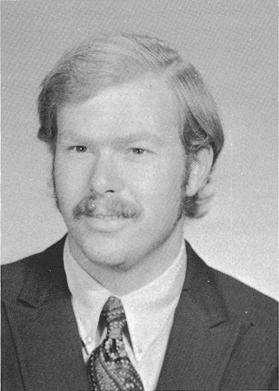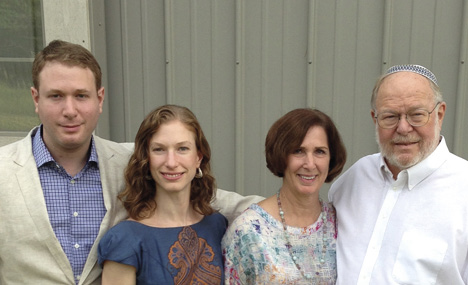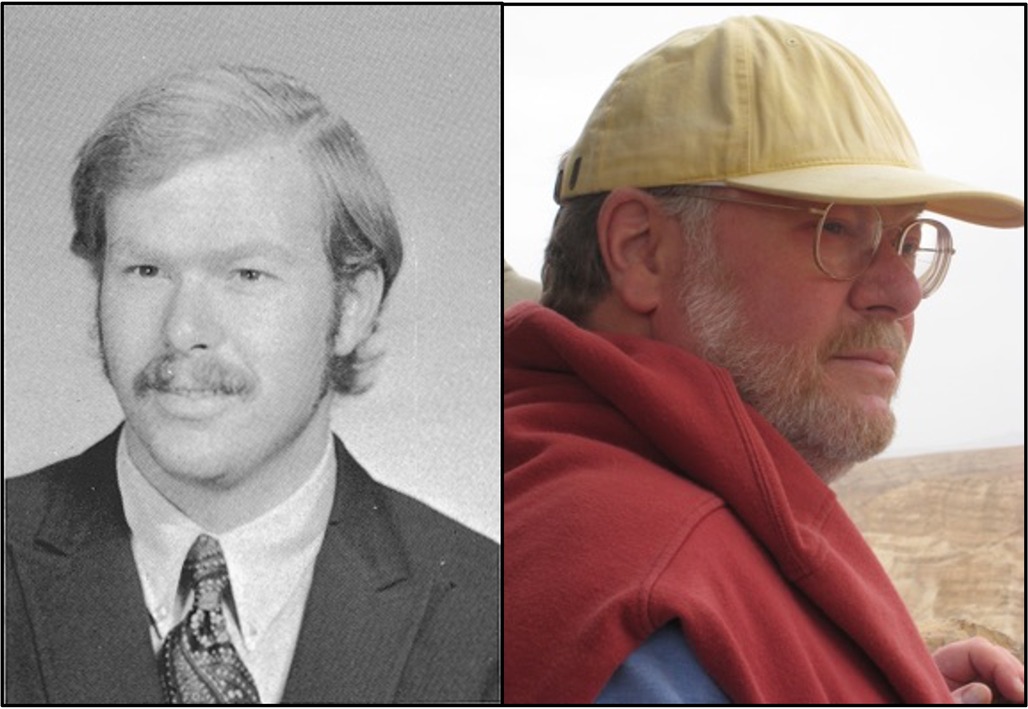Donald Marc Lewis, July 20, 2024
Livestream Memorial Service – Tuesday, July 23, 3 PM Eastern:
https://my.gather.app/remember/donald-lewis-jul-20-2024

Terri Lewis, Don’s wife, reports that Don passed away on July 20, 2024. Services will be held on July 23rd at 3:00 pm at the Jewish Funeral Chapel at 118 Center Street in Bangor, ME.
After Yale, Don went on to MIT, where he graduated with a Masters in Architecture in 1973. As he reported in his 50th Reunion Essay:
After Yale, I got my architecture degree from MIT, married, worked in Boston for a while, then moved to Maine. We thought we’d do a lot of camping and canoeing for a year or two, then move somewhere more sensible. We’re still here 45 years later. Along with work, served on several community boards and 6 years as board member then president of the Maine Humanities Council. Was involved for over 30 years with the men’s movement and several groups that met monthly for 30 years.
In 1983, Don co-founded Lewis+Malm Architecture with a partner, Rick Malm. He sold his interest in the firm to an employee in 2016, after completing over 500 projects, some of which were featured in publications such as the Maine Times, DownEast Magazine, Architectural Record, and School Product News. Some of the projects are showcased on the firm’s website.

Don and Terri had two children, Anya and Gabe.
LinkedIn expanded his “community board” involvement a bit:
- American Institute of Architects, member • Jan 1980 – Present
- Maine Humanities Council, Board member & chairperson • Jan 1980 – Jan 1986
- Bucksport Regional Health Association, Board member • Jan 1976 – Jan 1980
This is from his official obituary:
Donald Lewis, 77 years old, died on July 20 from complications of long term illnesses. He was born in Brooklyn, New York to Lorraine and Phillip Lewis and reared from age one in central New Jersey.
From ages eight to 12 Don worked as a professional model in New York City and appeared in the Sears catalog and magazines. As a teenager he won academic and poetry awards, and was senior class president and a National Merit Scholar. He and close friends David Gershen and Doug Seroff were post-beatnik, pre-hippie early discoverers and appreciators of Delta blues, folk music, Woody Guthrie and Bob Dylan. In his teen years, he was also active in the civil rights and anti-Vietnam War movements. He attended the second civil rights march from Selma to Montgomery, Alabama.
The search for truth and beauty were central themes of Don’s life, which he pursued through music, art, philosophy, poetry, religion and meditation. He earned a bachelor’s degree in Philosophy from Yale University in 1969, then a Master of Architecture from MIT in 1973.
After college, Don married Terri Chotiner, whom he had dated on-and-off since their high school freshman year. Their relationship became closer each year of their nearly 55-year marriage. In 1973 they moved from Boston to Maine to continue the canoe camping they both loved.
Their first home in Maine was an abandoned 42-acre farm in in the woods of Bucksport. They renovated the farmhouse, which had not previously had electricity or indoor plumbing. Their children, Anya and Gabe, were born in the ensuing years. In 1989, Don and Terri designed and built a new home in Bangor.
After working for architect Nick Holt in Ellsworth, Don founded his own architecture firm in Bucksport in the early 1980s. A year later, his friend Rick Malm joined him to form Lewis + Malm Architecture. Together, over nearly 40 years of successful partnership (and family friendship that continues to this day), they designed more than 30 schools, numerous city halls, fire and police stations, medical offices, nursing homes, banks and private residences. Don’s proudest architectural achievements include the Bangor Children’s Museum, Downeast Heritage Center in Calais, Ashland and Dover-Foxcroft K-12 Schools, and renovation of the Jewish Funeral Chapel and the sanctuaries of Congregation Beth El and Congregation Beth Israel in Bangor.
Don served on the Boards and as President of the Maine Humanities Council and Congregation Beth El of Bangor. He was a founding Board member of the Bucksport Regional Health Center. In the 1980s, he founded three Men’s Groups, each of which met for decades.
In his later years Don became an avid student of his Jewish heritage, and especially the ancient Jewish wisdom texts.A memorial service will be held in the Jewish Funeral Chapel at 118 Center Street in Bangor on Tuesday, July 23 at 3 pm. In lieu of flowers, donations may be made to Congregation Beth Israel, 144 York Street, Bangor, Maine 04401.
Condolences to the family may be expressed at BrookingsSmith.com. Those who wish to view the service may livestream it at https://my.gather.app/remember/donald-lewis-jul-20-2024
The above is compiled from the sources indicated. If you have recollections, reminiscences or stories, or want to add anything to the above, please either comment below with “Leave A Reply” or email your thoughts to Dan Seiver (seiverda@miamioh.edu) and Wayne Willis (support@Yale1969.org). If you have any good pictures, send them to Wayne, and he can add them to this post manually.


Freshman year, Don lived across the narrow hall from Mike Buas and me on the “extra” fifth floor of Lawrence Hall that was assigned to Davenport College-destined matriculants. He was the only one of the five of us (on his side, Alan Cohn and Randy Kennon) who was courteous and curious enough to write us all notes saying he was looking forward to meeting us. Thus began a lifelong friendship. As with so many of you, my memories now resemble postcards on which are written indelible vignettes.
Don provided me a number of epiphanic firsts. In the spring of freshman year Don took me to my first Passover, at his Grandmother Rose’s apartment in the Bronx. (It was thereafter inevitable that I would have a Jewish bride.) In sophomore year he was the first to introduce me to Greenwich Village, Frank Zappa, the Fugs, and a substance now generally legalized. He was the first classmate in my observation to have a date come to stay with him — his high school sweetheart, Terri. Six years later, when he was in architecture grad school at MIT and I in law school, he taught me not to throw kerosene on a wood fire in a wood cabin in the woods, as I nearly ignited a spectacular conflagration that would have been curtains for Terri, Ling, Don, and me.
In 1980 Terri and he were there when I married Betsy Katz. In 1996 they met me in Bangor, near their home, when Senator Olympia Snowe summoned me to an event in celebration of her tie-breaking vote that put in place our FCC program to connect every classroom and library in the country to the Internet. (The resulting $100b of spending over nearly three decades has nearly completed the task.) I saw Terri and Don last at our 50th, but for the last three decades the Internet let us keep in touch, and my capacious iPhone preserves our emails.
I never stopped learning from Don: about philosophy, men’s groups, curiosity, and the persistence of caring. I easily recall his chuckle at the myriad amusing aspects of life as we saw it. He had an irresistible aura of genial and sympathetic understanding. Hardly ever seeing him in person, I always took joy in being his friend. I am very glad, and honored, that in his final week he called me over 3,322 miles of inseparable distance to say goodbye. He asked me to record his passing for the class, and I have here done so.
Don was my roommate for a year in Davenport and part of our rooming group for 3 years. I can’t add much to Reed Hundt’s vivid memories. But I thought I would write something about Don’s architecture practice. However, his “official obit” already does that. Still, I can talk about his work from another perspective. Photos of his building projects are still online at https://lewisandmalm.com/ . What strikes me now is how conservative his designs were. Most contemporary architects want to display conspicuous originality, even eccentricity, to ensure their buildings are noticed and remembered. Not Don’s. His strive to look like they’ve always been there, appreciated landmarks rather than advertisements for the designer’s ego. I don’t think he would object if I said that his structures blend in so well that casual passers-by might not even notice how tasteful, how refined they are. They embody Don’s dedication to being good, as a person, as a neighbor, as a citizen and in serving his clients – not for show, but because it was the right thing to do.